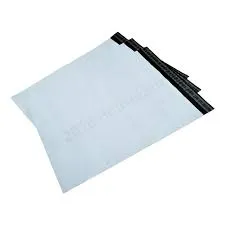biodegradable garden sacks
The Rise of Biodegradable Garden Sacks An Eco-Friendly Solution for Gardening Enthusiasts
In recent years, environmental concerns have pushed individuals and businesses alike to seek more sustainable practices. One such innovation that has gained traction in the gardening community is the use of biodegradable garden sacks. These sacks not only provide a practical way to manage garden waste, but they also contribute to reducing landfill waste and promoting a greener planet.
What Are Biodegradable Garden Sacks?
Biodegradable garden sacks are designed to decompose over time when exposed to natural environmental conditions. Made from natural materials such as plant starch, paper, or other compostable compounds, these sacks break down into non-toxic components, enriching the soil instead of polluting it. Unlike conventional plastic bags, which can take hundreds of years to decompose, biodegradable sacks are designed to return to the earth relatively quickly, usually within a matter of months.
Environmental Benefits
The environmental benefits of using biodegradable garden sacks are profound. First and foremost, they help reduce plastic waste. According to the United Nations, a staggering 300 million tons of plastic are produced globally each year, with a significant portion ending up in landfills and natural habitats. Biodegradable garden sacks provide a practical alternative to traditional plastic bags, allowing gardeners to dispose of their organic waste in an environmentally friendly manner.
Additionally, as these sacks decompose, they contribute valuable nutrients back into the soil, enhancing its fertility. This is particularly beneficial for gardeners who grow their own vegetables and flowers, as healthier soil can lead to more robust plant growth. By utilizing biodegradable sacks, gardeners can effectively close the loop of waste cycling.
Practical Uses in the Garden
biodegradable garden sacks

Biodegradable garden sacks are versatile and can serve several practical purposes in gardening. They are ideal for collecting grass clippings, leaves, and other organic debris, making yard work more manageable. After filling them with waste, gardeners can simply toss the sacks into their compost pile or garden bin, contributing to the composting process.
Moreover, these sacks can also be beneficial for other gardening tasks. For instance, some gardeners use them to transport soil, mulch, or plants, ensuring that they’re not contributing to plastic proliferation in the environment. Even when not filled, these sacks take up minimal space and can easily be stored when not in use.
Choosing the Right Biodegradable Sack
Not all biodegradable garden sacks are created equal. When selecting a sack, it is essential to look for certification marks indicating that the product meets specific compostability standards. Various organizations, such as the Biodegradable Products Institute (BPI) or the European Bioplastics Association, certify products that meet their stringent compostable criteria.
Gardening enthusiasts should also consider the size and thickness of the sacks. Thicker sacks may handle heavier waste more effectively, while larger sizes can accommodate bulkier items. It’s also advisable to check the recommended disposal methods, ensuring the sacks can be composted in the backyard or local municipal composting facilities.
The Future of Gardening
As awareness of environmental issues continues to grow, gardening practices are evolving. Biodegradable garden sacks represent a simple yet effective way for gardeners to contribute to a healthier planet. By adopting these eco-friendly alternatives, gardening enthusiasts can cultivate their gardens while ensuring they leave minimal impact on the environment.
In conclusion, biodegradable garden sacks are a step in the right direction towards sustainable gardening. They provide a practical solution for managing garden waste and enrich soil health while significantly reducing the environmental footprint associated with traditional plastic. As consumers continue to prioritize sustainability, the demand for biodegradable options is likely to rise, paving the way for innovations that will benefit both gardeners and the planet. By embracing these eco-friendly practices, we can all play a part in fostering a greener future for generations to come.
-
The Best Uses for Small Trash Bags in Daily LifeNewsJul.01,2025
-
Stylish Reusable Grocery Bags TrendsNewsJul.01,2025
-
Shipping Advantages of Using Bubble Envelopes BulkNewsJul.01,2025
-
How Compostable Mailing Bags Reduce Environmental ImpactNewsJul.01,2025
-
Environmentally - Friendly Bulk Poly MailersNewsJul.01,2025
-
Eco Friendly Custom Laminated Tote BagsNewsJul.01,2025
-
Have the freedom of customizing your custom mailers any way you want! Our dedicated packaging support will help deliver you the mailing experience you need to elevate your shipping experience to the next level! Start making a strong impression on your customers and stand out from your competitors! -
LIYA uses high quality raw materials which directly purchased from large enterprises domestic and overseas such as PetroChina, Sinopec, Sabic, Equate, ExxonMobil, Dow Chemical, Total, and Borouge, ensuring the price advantage and quality of the raw materials. -
LIYA uses high quality raw materials which directly purchased from large enterprises domestic and overseas such as PetroChina, Sinopec, Sabic, Equate, ExxonMobil, Dow Chemical, Total, and Borouge, ensuring the price advantage and quality of the raw materials.





